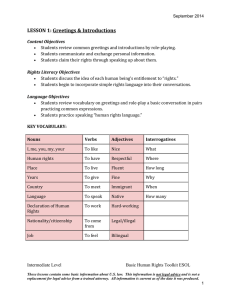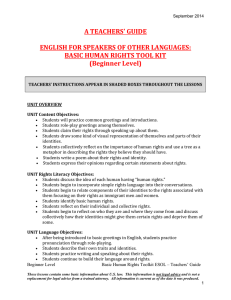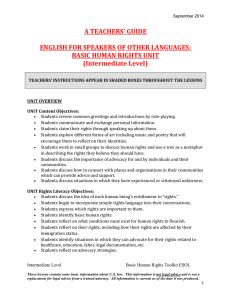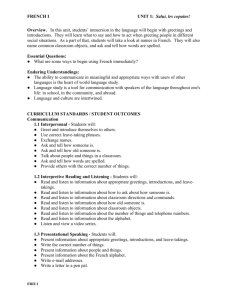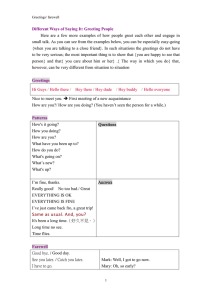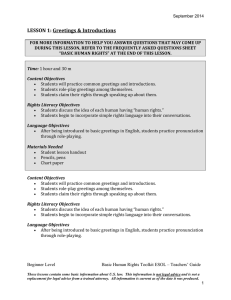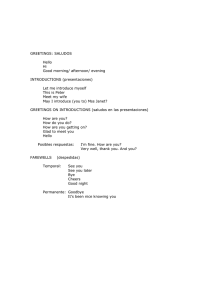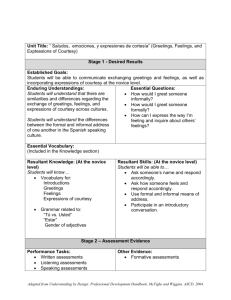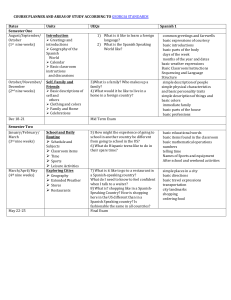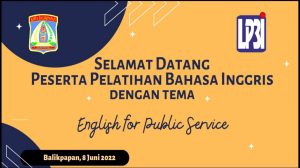LESSON 1: Greetings & Introductions
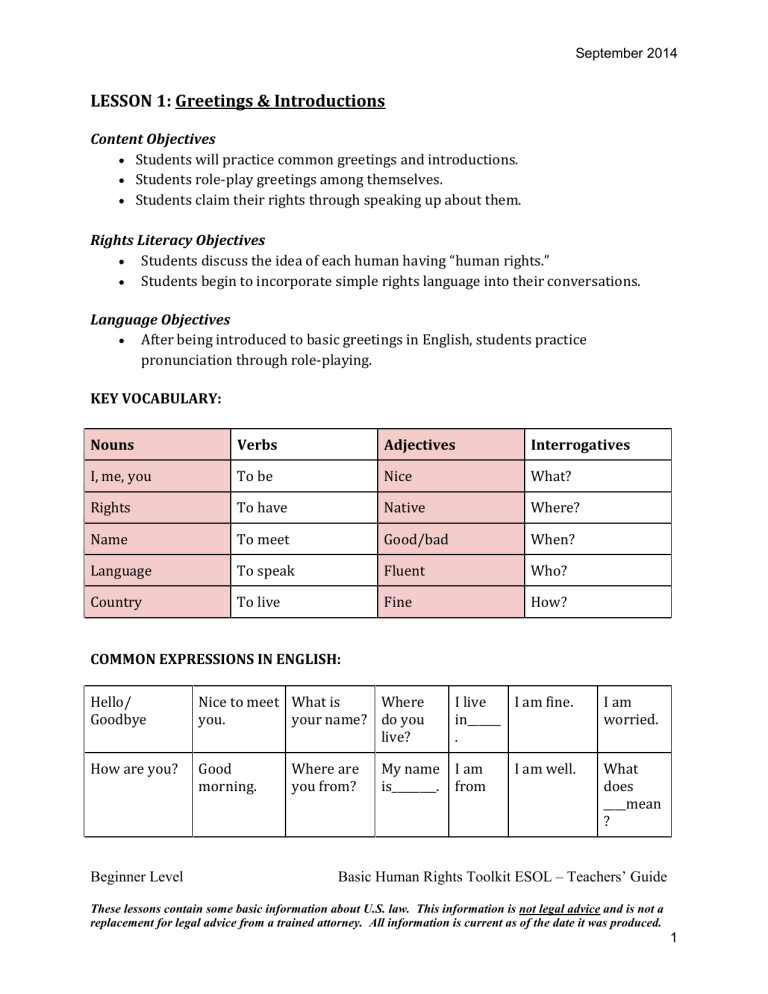
September 2014
LESSON 1: Greetings & Introductions
Content Objectives
• Students will practice common greetings and introductions.
•
•
Students role-play greetings among themselves.
Students claim their rights through speaking up about them.
Rights Literacy Objectives
•
•
Students discuss the idea of each human having “human rights.”
Students begin to incorporate simple rights language into their conversations.
Language Objectives
• After being introduced to basic greetings in English, students practice pronunciation through role-playing.
KEY VOCABULARY:
Nouns Verbs Adjectives Interrogatives
I, me, you
Rights
Name
Language
Country
To be
To have
To meet
To speak
To live
Nice
Native
Good/bad
Fluent
Fine
What?
Where?
When?
Who?
How?
COMMON EXPRESSIONS IN ENGLISH:
Hello/
Goodbye
Nice to meet you.
What is your name?
Where do you live?
How are you?
Good morning.
Where are you from?
My name is________.
.
I live in______
I am from
I am fine.
I am worried.
I am well.
What does
____mean
?
Beginner Level Basic Human Rights Toolkit ESOL – Teachers’ Guide
These lessons contain some basic information about U.S. law. This information is not legal advice and is not a
replacement for legal advice from a trained attorney. All information is current as of the date it was produced.
1
September 2014
I don’t speak
English.
I am sorry.
Thank you Have a good day.
Can you repeat
?
I don’t understand
.
How do you say___ in
English?
Lesson Activities:
PART A) Greetings
On a piece of paper, write the following expression:
“ My name is _____________and I have rights.
”
Then, everyone speaks and introduces herself/himself saying the phrase:
“ My name is _____________and I have rights.
”
PART B) Simple Role Play Activity
Using the common greetings expressions, introduce yourself to another person in the class.
You can begin with the following expressions: “ Where are you from ?” “ My name is _____.”
“What is your name?” “Nice to meet you!
” “ Do you have rights?” “Yes, I have rights!”
PART C) Brainstorming Ideas on Human Rights
In class, share your ideas of the meaning of “human rights” using a word, phrase or an example. At the end of this brainstorming activity, reflect on what all the responses have in common.
Whole group discussion . Express your opinion about the following questions. You can give examples from your personal experiences, if you’d like.
•
•
Do we have rights?
What kind of rights do we have?
• How do we see rights affecting our lives?
Beginner Level Basic Human Rights Toolkit ESOL – Teachers’ Guide
These lessons contain some basic information about U.S. law. This information is not legal advice and is not a
replacement for legal advice from a trained attorney. All information is current as of the date it was produced.
2
